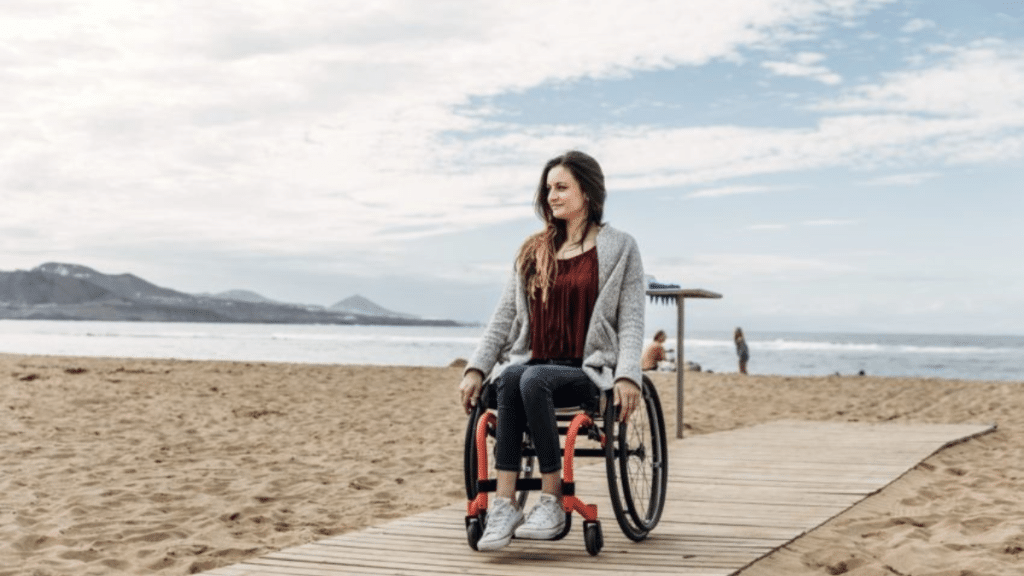When it comes to choosing the right wheelchair, there’s no one-size-fits-all. Whether you’re selecting one for yourself or a loved one, the decision can feel a bit overwhelming, especially when faced with the big question: folding or non-folding?
Each type has its own perks and drawbacks, so it really comes down to your lifestyle, mobility needs, and how you plan to use the chair day-to-day. In this blog, we’ll take a fair-dinkum look at both folding and non-folding wheelchairs to help you work out which is the better fit for you.
What’s the Difference?
Before we get stuck into the pros and cons, let’s quickly break down the difference.
- Folding wheelchairs are designed to collapse – usually in the middle – for easy transport and storage. They’re great for popping into the boot of a car or tucking away when not in use.
- Non-folding wheelchairs, also known as rigid-frame wheelchairs, don’t fold in the same way. They have a solid frame, which means they’re generally stronger and more responsive, but not as compact.
Now let’s dive into the details.
Folding Wheelchairs – The Pros
1. Portability and Convenience
This is where folding wheelchairs really shine. They’re ideal for people who are always on the go or need to travel regularly – whether it’s a quick trip to the shops or longer holidays. Most folding chairs can be folded down in seconds and don’t require any tools.
2. Easy to Store
If space is a bit tight – say you live in a small flat or you need to stow your chair in a cupboard, car boot, or corner of a room – a folding chair can make life a lot easier. You can tuck it away when not in use, giving you a bit more room to move.
3. Great for Caregivers
Many folding wheelchairs are designed with caregivers in mind. They’re lightweight, easy to push, and simple to lift in and out of vehicles, which makes them a good option for family members or support workers helping someone get around.
Folding Wheelchairs – The Cons
1. Less Efficient
Folding wheelchairs often have a bit more flex in the frame, which can make them feel slightly sluggish compared to rigid ones. For people who self-propel, this might mean more effort and energy to get around.
2. Heavier Components
To make the folding mechanism work, manufacturers sometimes use extra parts or heavier materials. This can lead to a bulkier frame that might be a bit of a pain to lift repeatedly.
3. Less Customisable
While there are high-end folding wheelchairs that allow for some customisation, rigid frames usually offer more options in terms of fit, design, and adjustments – particularly for active users or athletes.
Non-Folding (Rigid) Wheelchairs – The Pros
1. Lightweight and Responsive
Because they don’t need to fold, rigid-frame chairs are often built with fewer parts, which makes them lighter. This gives you better control, speed, and manoeuvrability – a big win if you’re independent and active.
2. Energy Efficient
The solid frame makes rigid wheelchairs more efficient to push. Over time, that means less fatigue and strain on the shoulders and arms – something that matters a lot if you’re using the chair full-time.
3. Strong and Durable
Non-folding chairs are built to last. The rigid frame can handle more knocks and bumps, making them ideal for rougher terrain or more demanding use.
4. Highly Customisable
From frame size and seating to wheels and backrests, rigid wheelchairs offer a wide range of custom options. That means a better fit for your body, better posture, and better long-term comfort.
Non-Folding Wheelchairs – The Cons
1. Less Portable
One of the biggest downsides is transport. Even though some parts (like the wheels or backrest) might come off for travel, the main frame doesn’t fold. This can be tricky if you have a small car or limited storage.
2. Not Ideal for Occasional Users
If you only use a wheelchair now and then – maybe due to injury or temporary need – a non-folding chair might be overkill. They’re generally pricier, and the added performance features might not be necessary.
3. Harder for Caregivers
Rigid wheelchairs can be more awkward for caregivers to manage. They may be harder to lift or store if you’re helping someone else get in and out of vehicles regularly.
So, Which One Is Better?
The honest answer? It depends.
If you:
- travel often,
- need a compact option for tight spaces,
- or rely on a caregiver for transport…
…then a folding wheelchair could be the better bet.
But if you:
- use a wheelchair every day,
- want better performance and less strain,
- or value a custom fit and smoother ride…
…a non-folding (rigid) wheelchair might be the way to go.
Things to Consider Before Choosing
Here are a few extra things to keep in mind:
- Lifestyle: Are you active? Do you travel a lot? What kind of terrain do you usually encounter?
- Storage: Do you have enough room at home or in your car for a rigid frame?
- Budget: Rigid chairs often cost more upfront but may offer better long-term value.
- Support needs: Will you have someone helping you transport or use the chair?
It’s also a smart move to chat with a healthcare professional or occupational therapist before deciding. They can assess your mobility needs and help recommend the best option for your situation.
Final Thoughts
Choosing between a folding and non-folding wheelchair isn’t just about convenience – it’s about comfort, independence, and quality of life. The good news is, there’s a wide range of models available in Australia that cater to all kinds of users, from occasional to full-time.
At the end of the day, the best wheelchair is the one that fits your life – not the other way around.
